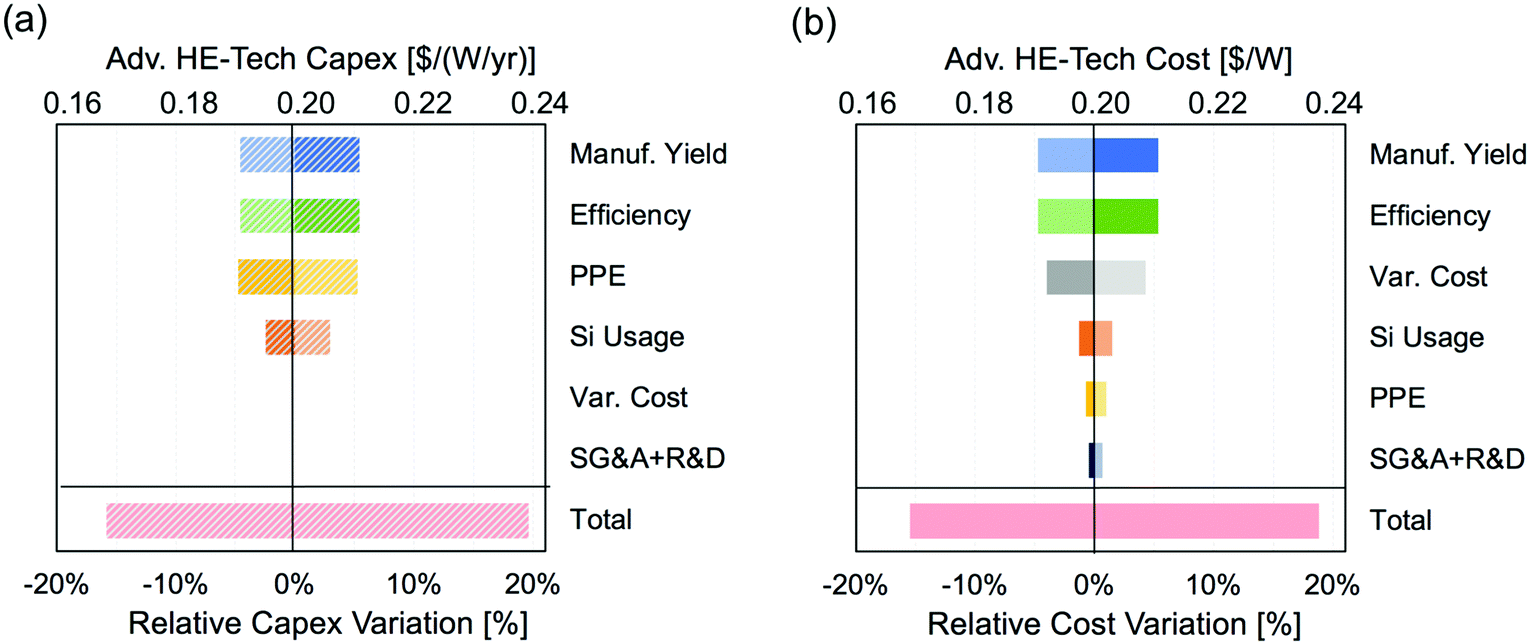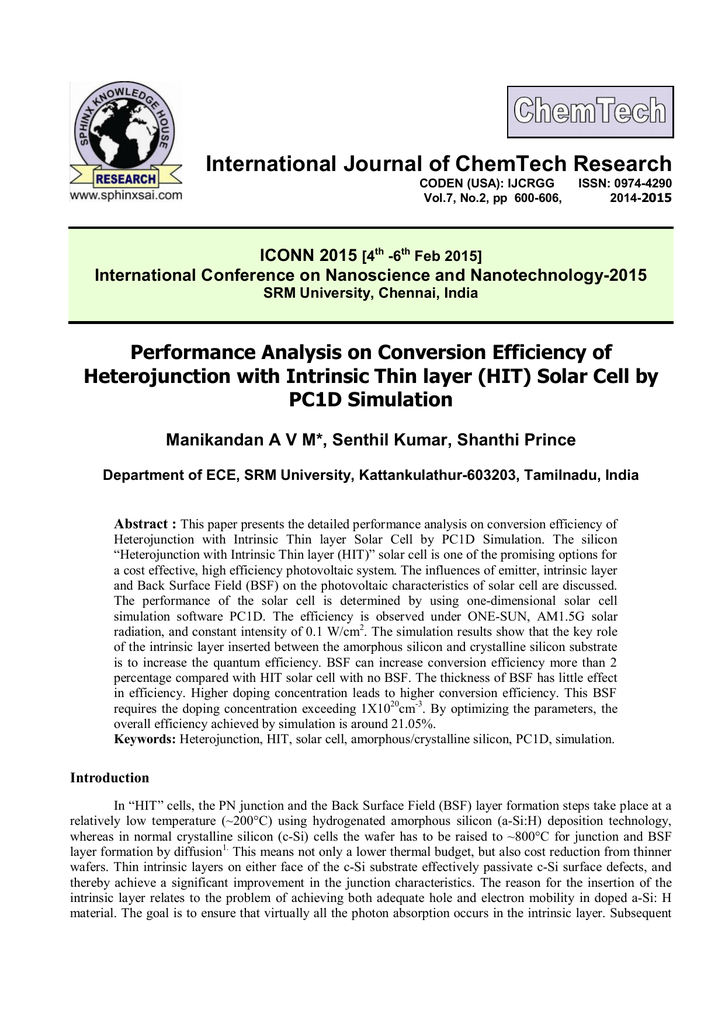

#Simulation silicon crystalline efficiency pc1d series#
The values of the shunt resistance and series resistance in solar cells with different passivation layers were compared, and the cause of the decrease in the efficiency under low illumination was also analyzed via fill factor calculation.Ībstract = " Silicon dioxide (SiO 2 ) is widely used to improve the surface passivation properties of silicon solar cells. Passivation characteristics were measured using the quasi-steady-state photoconductance (QSSPC) technique to evaluate the minority carrier lifetime and the implied open-circuit voltage (V OC ), and capacitance-voltage measurements were used to analyze the fixed charges. Silicon solar cells with a SiN x /SiO 2 bilayer or a SiN x single film were fabricated, and their characteristics were evaluated. In this study, we confirmed how the SiO 2 layer affected the low illumination properties of solar cells, even though these cells were more efficient at 1 sun. PC1D simulation was used to analyze parameters, such as the series resistance, parallel resistance, and surface recombination, that affect the characteristics of the solar cell at low light intensity. Shunt resistance (R shunt ) is known to cause a decrease in solar cell efficiency under low illumination conditions. To maximize the performance of the PV module, the output at a low light intensity level should also be considered. Actually, the efficiency in the low illumination condition affects the average power output per day because the PV module mostly operates when the solar irradiation dose is less than 1 sun.

However, experiments have confirmed that solar cells with a silicon oxide (SiO 2 ) film have a lower efficiency than solar cells without a silicon oxide (SiO 2 ) film at low illumination (<0.4 sun). To minimize solar cell potential-induced degradation when the PV module is installed outdoors, a silicon oxide film is widely used as an insulator. Silicon dioxide (SiO 2 ) is widely used to improve the surface passivation properties of silicon solar cells.


 0 kommentar(er)
0 kommentar(er)
